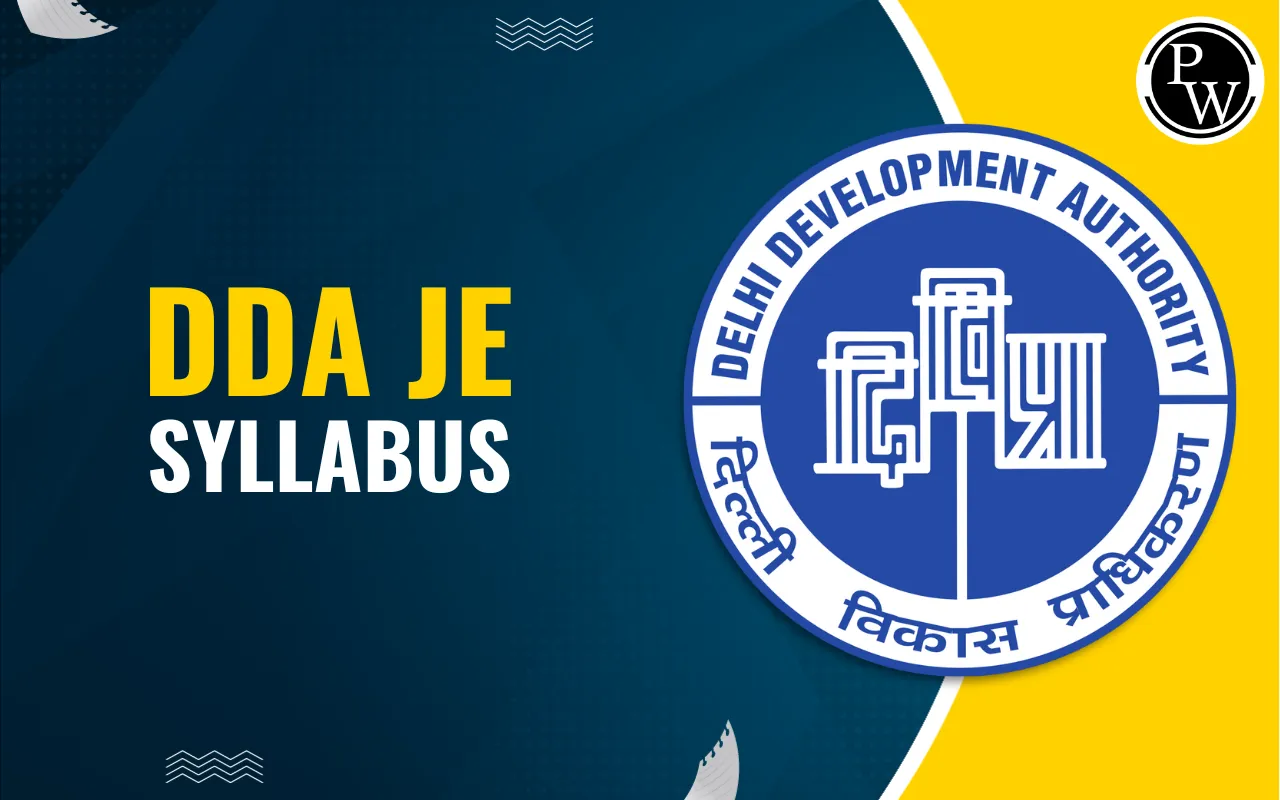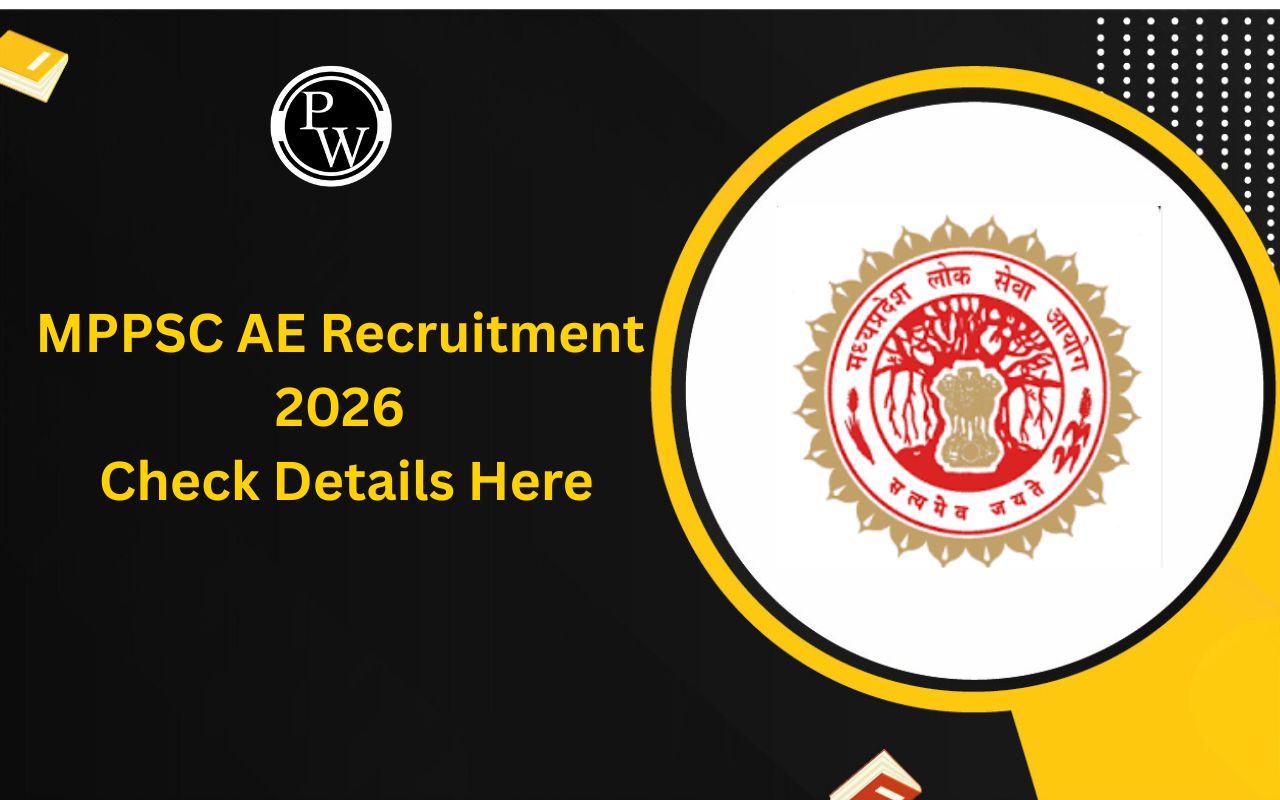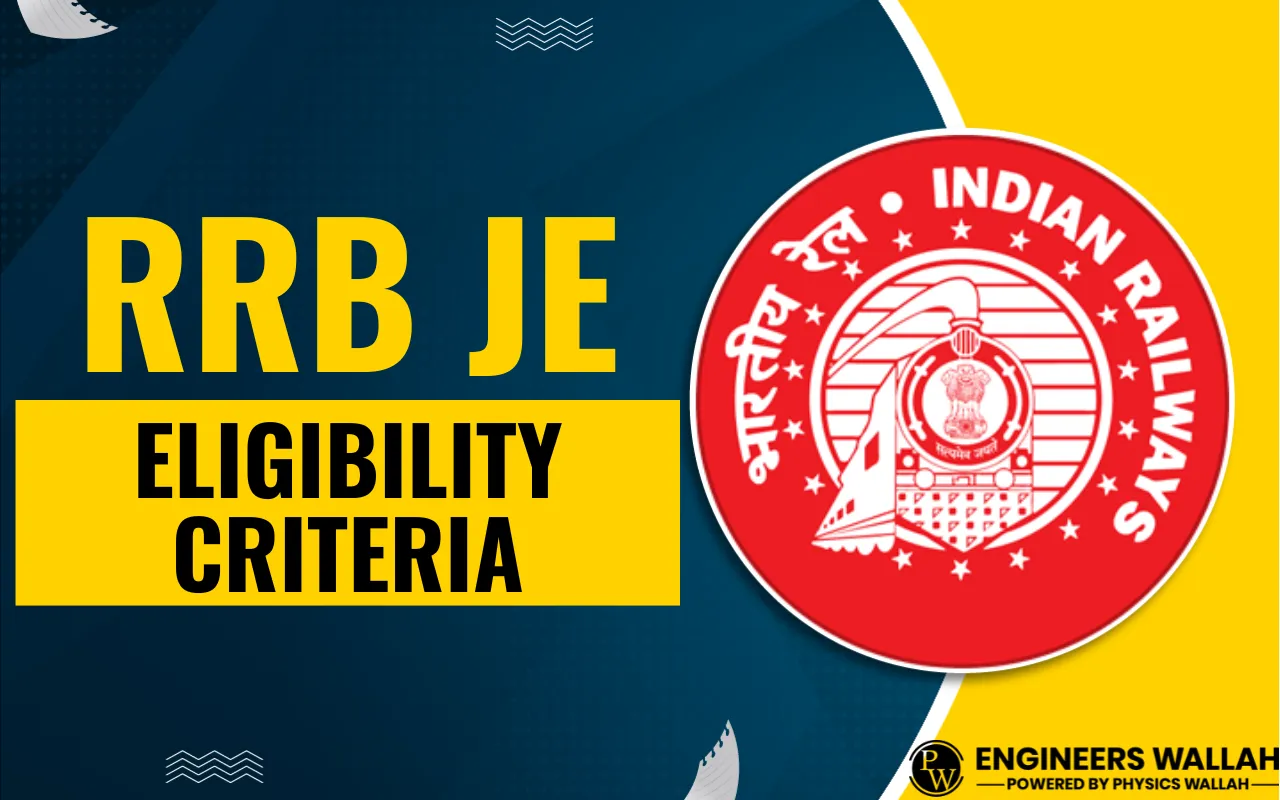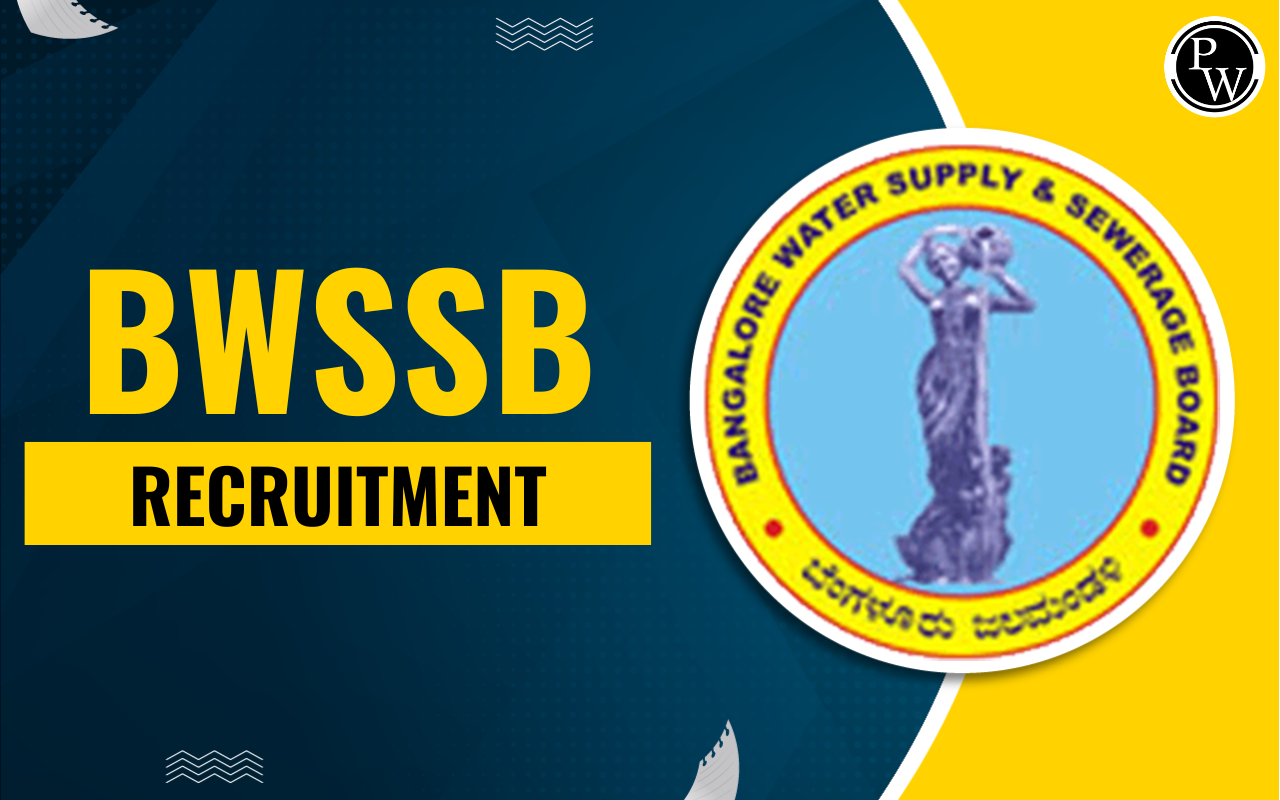
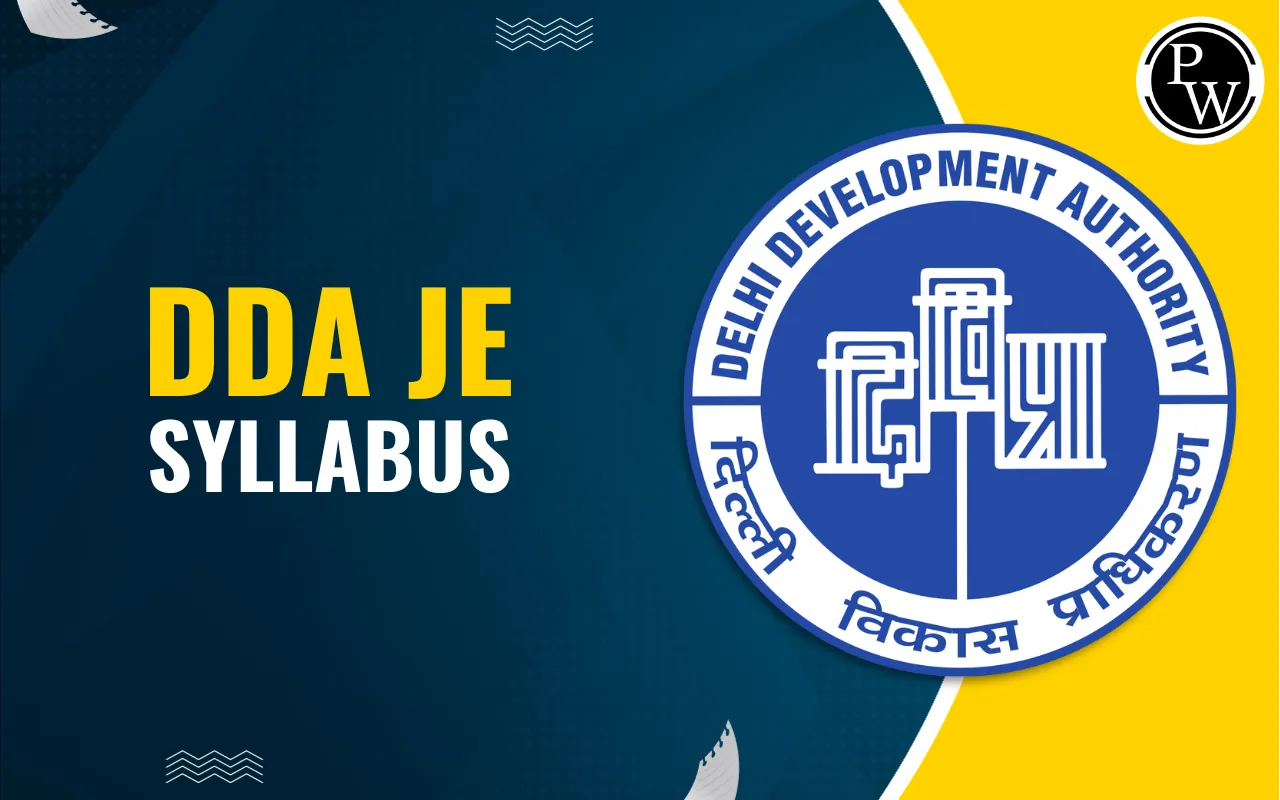
DDA JE Syllabus 2025: The official DDA Recruitment 2025 draft was released on September 12, 2025, and included 268 Vacancies for Junior Engineer (Civil/Electrical/Mechanical), AEE, Assistant Director, Planning Assistant, Programmer, Junior Translator, and other positions. The DDA is seeking reputable government positions in Delhi and provides prospective candidates a fair chance to fulfill the requirements for 268 vacancies.
On October 6, 2025, the DDA JE 2025 online registration will go live on www.dda.gov.in, the official website. Aspirants who want to crack the forthcoming DDA JE Exam 2025 must have a better understanding of the syllabus to prepare effectively. Here, the detailed topic-wise DDA JE Syllabus 2025 is available for all the subjects to gear the preparation of candidates.
DDA Syllabus 2025
Delhi Development Authority released the DDA Syllabus 2025 for the written exam to be conducted for filling various Junior Engineer vacancies. Candidates must be well versed with DDA Junior Engineer Syllabus 2025 to prepare for the exam accordingly. This article consolidates the detailed DDA Exam Syllabus 2025 for the sake of the ease of aspirants.
Check: DDA JE Exam Pattern
DDA JE Syllabus 2025 Overview
The aspirants preparing for DDA JE Exam 2025 must check the complete syllabus for the examination. Check out a brief overview of DDA JE Syllabus 2025 provided in the below table:
| DDA JE Syllabus 2025 Overview | |
| Organization | Delhi Development Authority (DDA) |
| Post Name | Junior Engineer |
| Vacancies | 268 |
| Category | AE/JE Jobs |
| Notification Status | Released |
| Online Registration Dates | 6th October to 5th November 2025 |
| Job Location | Delhi |
| Selection Process | Computer Based Test |
| DDA JE Syllabus | Available Here |
| DDA JE Official Website | www.dda.gov.in |
Check: DDA JE Selection Proces
DDA Junior Engineer Syllabus 2025
Candidates must know the complete syllabus for the DDA Junior Engineer Exam 2025 to prepare effectively as per the requirements of the exam. The detailed topic-wise DDA Junior Engineer Syllabus 2025 is described in this section to boost the aspirant's preparation:
DDA JE Civil Engineering Syllabus
The syllabus for the Civil Engineering section for the upcoming DDA Junior Engineer Exam 2025 is as follows:Building Materials: Physical and Chemical properties, classification, standard tests, use, and manufacture/quarrying of materials e.g. building stones, silicate-based materials, cement (Portland), Asbestos products, Timber and Wood based Products, laminates, bituminous materials, paints, varnishes. Surveying: Principles of surveying, working of properties, compass, and bearing, plane table surveying, theodolite traverse, adjustment of theodolite, leveling and contouring, curvature, refraction, permanent adjustment of dumpy level, methods of contouring and uses of a control map, tachymetric survey.
Soil Mechanics: Origin of the soil phase diagram, definitions of void ratio, porosity, degree of saturation, water content, the specific gravity of soil grains and unit weights, grain size distribution curves for different solids and their uses. Atterjerg’s limits, ISI soil classification, plasticity chart, coefficient of permeability, effective stress, consolidation of soils. Calculation of shear strength of soils, direct shear test, vane shear test, triaxial test, soil compaction, Lab compaction, Lab compaction test, moisture content and bearing capacity of soils, plate load test, standard penetration test.
Hydraulics: Fluid properties, hydrostatics, measurements of flow, Bernoulli’s theorem and its application, flow through pipes, flow in open channels, weirs, flumes, spillways, pumps, and turbines.
Environmental Engineering: Quality of water, source of water supply, purification of water, distribution of water, the need for sanitation, sewerage system, circular sewers, oval sewer, sewer appurtenances, surface water drainage, sewage treatments.
Structural Engineering: Theory of structures: Elasticity constants, type of beams, determinate and indeterminate, bending moment and shear force diagrams of simply supported, cantilever, and over hanging beams. Moment of area and moment of inertia for rect. & circular section, bending moment and shear stress for tee, channel and compound sections, chimneys, dams and retaining walls, eccentric loads, slope deflection of simply supported and cantilever beams, critical load and columns, torsion of circular section.
Concrete Technology: Properties, Advantages, and uses of concrete, cement aggregates quality, water cement ratio, workability, mix design, storage, batching, mixing, placement, compaction, finishing and curing of concrete, quality control of concrete, hot weather, and cold weather concreting, repair and maintenance of the concrete structure.
RCC Design: RCC beams: flexural strength, shear strength, bond strength, design of single reinforced beans, lintels, cantilever beams, double reinforced beams, one-way slabs, two-way slabs, isolated footings, reinforced brickwork. T-beams, columns, staircases, retaining walls, and water tanks (RCC design questions may be based on both the Limit State method and the Working Stress method).
Steel Design: Steel design and construction of steel columns, beams, roof trusses, and plate girders.
Check: DDA JE Eligibility Criteria
Also, check: DDA JE Salary
DDA JE Non-Technical Syllabus 2025
The topic-wise syllabus for the DDA JE Non Technical Section is mentioned below as per the official notification:
General Awareness
Questions in this section will be aimed at testing the candidate’s general awareness of the environment around him and its application to society. Questions will also be designed to test knowledge of current events and such matters of everyday observations and experience in their scientific aspect as may be expected of any educated person. The test will also include questions relating to India and its neighboring countries especially pertaining to History, Culture, Geography, Economic Scene, General Policy & Scientific Research.
General Intelligence & Reasoning
This section includes questions from verbal and non-verbal both. This may include questions on analogies, similarities and differences, space visualization, spatial orientation, problem-solving, analysis, judgment, decision-making, Visual memory, discrimination, observation, relationship concepts, arithmetical reasoning and figural classification, arithmetic number series, non-verbal series, coding and decoding, statement conclusion, syllogistic reasoning, etc. The topics are Semantic Analogy, Symbolic/Number Analogy, Figural Analogy, Semantic Classification, Symbolic/Number Classification, Figural Classification, Semantic Series, Number Series, Figural Series, Problem Solving, Word Building, Coding & de-coding, 19 Numerical Operations, symbolic Operations, Trends, Space Orientation, Space Visualization, Venn Diagrams, Drawing inferences, Punched hole/pattern–folding & unfolding, Figural Pattern– folding and completion, Indexing, Address matching, Date & city matching, Small & Capital letters/numbers coding, decoding, and classification.
Quantitative Aptitude
The questions will be designed to test the ability to appropriately use numbers and number sense of the candidate. The scope of the test will be the computation of whole numbers, decimals, fractions, and relationships between numbers, Percentage, Ratio & Proportion, Square roots, Averages, Interest, Profit and Loss, Discount, Partnership Business, Mixture and Allegation, Time and distance, Time & Work, Basic algebraic identities of School Algebra, Triangle and its various kinds of centers, Congruence and similarity of triangles, Circle and its chords, tangents, angles subtended by chords of a circle, common tangents to two or more circles, Triangle, Quadrilaterals, Regular Polygons, Circle, Sphere, Hemispheres, Rectangular Parallelepiped, Regular Right Pyramid with triangular or square base, Trigonometric ratio, Standard Identities, Complementary angles, Heights and Distances, Histogram, Frequency polygon, Bar diagram & Pie chart.
English Language & Comprehension
Questions in this component will be designed to test the candidate’s understanding and knowledge of the English Language and will be based on spotting the errors, fill in the blanks, synonyms, antonyms, spelling/detecting misspelled words, idioms & phrases, one-word substitution, improvement of sentences, active/passive voice of verbs, conversion into direct/indirect narration, shuffling of sentence parts, shuffling of sentences in a passage, cloze passage & comprehension passage.
Explore PW AE JE Online Courses to prepare effectively for the SSC JE, RRB JE, and other upcoming AE/JE examinations. Access structured study material with mock tests, e-books, etc., to gear up your exam preparation.
DDA JE Syllabus 2024 FAQs
Q. Where can I check the DDA JE Syllabus 2025?
Q. How to download DDA JE Syllabus 2025 PDF?
Q. Is DDA JE Exam tough?
Q. Where can I find the DDA Junior Engineer Syllabus 2025?

